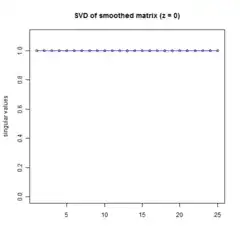Let $x_{0:t}^{(i)}$ be the states from time $0$ to $t$ from sample $i$. Similarly for the observations $y_{1:t}$.
The normalized weights are updated according to
Where does the term $p(y_t|x_t^{(i)})$ come from? $\pi$ is the proposal/importance distribution, and $p$ the true distribution.
From the unnormalized weight formula:
$$\omega^{(i)}_t=\frac{p(x_{0:t}^{(i)}|y_{1:t})}{\pi(x_{0:t}^{(i)}|y_{1:t})}= \frac{p(x_{0:t-1}^{(i)}|y_{1:t})p(x_{t}^{(i)}|x_{0:t-1}^{(i)},y_{1:t})}{\pi(x_{0}^{(i)})\prod_k^{t-1} \pi(x_{k}^{(i)}|x_{0:k-1}^{(i)},y_{1:k})\pi(x_{t}^{(i)}|x_{0:t-1}^{(i)},y_{1:t})}=\omega^{(i)}_{t-1}\frac{p(x_{t}^{(i)}|x_{t-1}^{(i)})}{\pi(x_{t}^{(i)}|x_{0:t-1}^{(i)},y_{1:t})}$$
But I fail to get that term
